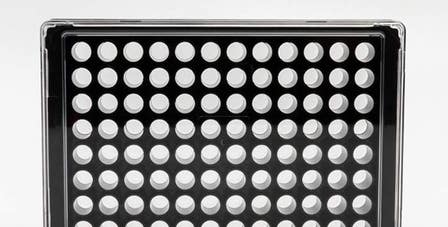The pharmaceutical industry is under huge pressure to address the high attrition rates in drug development. With around 90% of candidates failing during clinical development,1 the process is not only long and risky, but also expensive for those involved.
There are many reasons that promising drug candidates are discontinued, including poor pharmacokinetics, lack of clinical efficacy, and toxicity. These might only emerge late in the drug development pipeline – often many years after the initial research and development. Furthermore, nearly one third of drugs get withdrawn from the market post approval due to safety concerns.2
Toxic to the heart
One of the top reasons for drug withdrawal from clinical trials and the market is cardiotoxicity, which can be defined as toxicity that has a detrimental impact on the heart. In some cases, cardiotoxicity can lead to arrhythmia, myocardial dysfunction, or even terminal heart failure.
Recognizing the adverse effects of drug candidates in the early phases of drug development could significantly reduce cardiotoxicity risks, but it can be challenging to predict clinical outcomes using preclinical models. This is in part due to a limited understanding of the translatability across model systems and species.
To confidently advance novel drug candidates, it’s important that reliable and scalable preclinical models are developed that appropriately reflect human physiology. In particular, in vitro models using human induced pluripotent stem cell (hiPSC)-derived cardiomyocytes are often used to predict both cardiovascular safety and therapeutic efficacy of drugs. These hiPSC-derived cardiomyocytes are particularly attractive as they recapitulate the expected genetic, genomic, biochemical, and electrophysiological behaviors of human cardiomyocytes and heart tissue.
Spontaneous rhythmic beating
In a recent application note, scientists describe a label-free approach to quantify compound dependent changes in cardiomyocyte beating frequency using the Opera Phenix® Plus high-content screening system equipped with a pipettor module. Keeping cardiomyocytes at physiological conditions are of great importance for cardiotoxicity assessment, and the system precisely controls and keeps temperature, CO2, and humidity at optimal levels during the assay.
The hiPSC were first seeded into fibronectin-precoated PhenoPlate™ 96-well microplates
 PhenoPlate 96-well, black, optically clear flat-bottom, tissue-culture treated, lids, case of 50
Discover
, where they formed spontaneously and synchronously beating monolayers after three days of culture. When imaged, the hiPSC showed a stable beating rate.
PhenoPlate 96-well, black, optically clear flat-bottom, tissue-culture treated, lids, case of 50
Discover
, where they formed spontaneously and synchronously beating monolayers after three days of culture. When imaged, the hiPSC showed a stable beating rate.
To analyze drug-induced changes in the contraction frequency, epinephrine (adrenaline) was added at different concentrations and the cardiomyocytes were imaged. As expected, epinephrine treatment led to an increase in cardiomyocyte beating rate. The addition of ivabradine, which blocks ion current and stabilizes the heart beating rate, led to a dose-dependent decrease of cardiomyocyte beating rate. Finally, when the scientists applied different concentrations of nifedipine, which acts on the calcium ion-flux and reduces the heart beating rate, treatment decreased or eliminated the beating of cardiomyocytes, without other detectable changes in overall cell morphology.
For research use only. Not for use in diagnostic procedures
References:
- Hingorani, A.D., Kuan, V., Finan, C. et al. Improving the odds of drug development success through human genomics: modelling study. Sci Rep 9, 18911 (2019). https://doi.org/10.1038/s41598-019-54849-w
- New safety concerns identified for 1 in 3 FDA-approved drugs [Internet]. YaleNews. 2021 [cited 16 December 2021]. Available from: https://news.yale.edu/2017/05/09/new-safety-concerns-identified-1-3-fda-approved-drugs

































